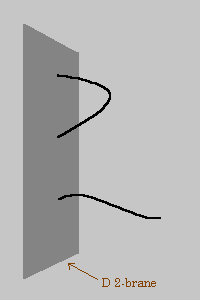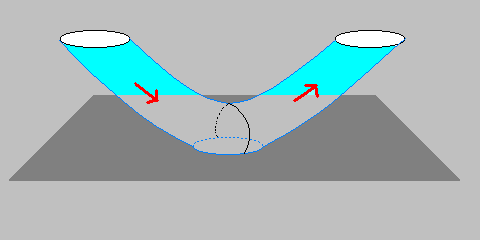

D-branes can have dimensions ranging from -1 to the number of spatial dimensions in our spacetime. For example superstrings live in a 10-dimensional spacetime which has 9 spatial dimensions and one time dimension. Therefore the D9-brane is the upper limit in superstring theory. Notice that in this case the endpoints are fixed on a manifold that fills all of space so it is really free to move anywhere and this is just a Neumann boundary condition! The case p= -1 is when all the space and time coordinates are fixed, this is called an instanton or D-instanton. When p=0 all the spatial coordinates are fixed so the endpoint must live at a single point in space, therefore the D0-brane is also called a D-particle. Likewise the D1-brane is also called a D-string. Incidently the suffix 'brane' is borrowed from the word 'membrane' which is reserved for 2-dimensional manifolds or 2-branes!
D-branes are actually dynamical objects which have fluctuations and
can move around. For example they interact with gravity. In the diagram
below we see one way in which an closed string (graviton) can interact
with a D2-brane. Notice how the closed string becomes an open string with
endpoints on the D-brane at the intermediate point in the interaction.

We now see that string theory is more than just a theory of strings!
 |
 |
 |
 |